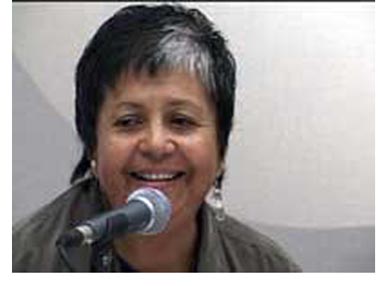Bill C-3, An Act to promote gender equity in Indian registration, received royal assent on Dec. 15.
On Nov. 26, Sharon McIvor, the First Nations woman whose constitutional challenge to the Indian Act is the inspiration for Bill C-3, filed a complaint against Canada with the United Nations Human Rights Committee.
Bill C-3 will, one more time, fix part of the discrimination against Aboriginal women and their descendants, but leave a lot of it in place. Sharon McIvor has been unable to win full justice from the Canadian courts or from Parliament, so she is taking her case to the international community. Her complaint is that for 153 years Canada has discriminated against Aboriginal women and their descendants, and in 2010 Canada is passing new legislation that still does not fully eliminate the discrimination.
Starting in the 19th century, Canada enacted laws defining who is an Indian. Patriarchal settler governments defined an Indian as a male Indian, the wife of a male Indian, or the child of a male Indian. These laws treated Aboriginal women as property, not as full persons, capable, like men, of transmitting status to their partners and descendants.
For example, if a male Indian married a non-Indian he endowed his Indian status on his wife and children, while a female Indian who married a non-Indian lost her status, and could not pass it to her husband or her children. This “marrying out rule” is just one aspect of the preference granted to male Indians and male line descendants for generations.
In the 1970s, Jeanette Corbiere Lavell and Yvonne Bedard challenged the discrimination in the marrying out provisions in the Indian Act using the Canadian Bill of Rights. They lost. The Supreme Court of Canada reasoned that the Bill of Rights only prohibited discrimination “before the law,” that is, in the administration of the law, and since all Aboriginal women were treated the same, there was no discrimination.
Shortly after, Sandra Lovelace, now a Senator, took a complaint to the UN Human Rights Committee, which ruled that Canada violated its international human rights obligations by denying women who married out the right to equal enjoyment of their culture. In 1985, partly in response to Lovelace, and partly in anticipation of the new equality guarantee in the Charter, Canada amended the Indian Act and removed some of the sex discrimination, but not all of it. In 1985, Canada carried forward the male privilege embedded in earlier versions of the Indian Act. It granted status to women who had married out, but it granted them a second class status. They could pass Indian status to their children, but not to their grandchildren. Their male counterparts who never lost status when they married out had full status, and could transmit it to their children and grandchildren.
When Sharon McIvor challenged this post-Charter continuation of sex discrimination against Aboriginal women and their descendants, she won at the trial level. But the B.C. Court of Appeal ruled that most of the discrimination against Aboriginal women and their descendants in the 1985 Act is justified because its purpose is to preserve the pre-existing rights of the men and their descendants.
This is shocking reasoning in the Charter era, especially when extending the same rights to Aboriginal women and their descendants would in no way diminish or disturb the rights of the men and their descendants; it would just make the women and their descendants equal. According to the Court, only where the 1985 Act improved the rights of male-line descendants, rather than merely preserving them, was there discrimination that was not justified. Since the Conservatives have based their amendments on the B.C. Court of Appeal’s logic, many descendants of Aboriginal women, whose paternal line counterparts have status, will still be left out by Bill C-3, and Aboriginal women will still not have equality.
Although the Conservatives say that Bill C-3 will provide access to Indian status to 45,000 descendants of Aboriginal women who were previously ineligible, it will still not give them equal registration status. The descendants of women will still have less ability to transmit their status than the descendants of men. The legislated inability of one Indian parent to transmit status, known as the second generation cut-off, will apply to them one generation earlier than it applies to male lineage descendants.
In addition, Bill C-3 will still leave out many Aboriginal women and their descendants for no reason other than sex discrimination. Since Bill C-3 proposes only to correct the sex discrimination against the grandchildren of women who lost status by “marrying out”, it will continue to exclude grandchildren descended from status Indian women who co-parented with non-status men in common-law unions, as well as female children and grandchildren of status Indian men who co-parented with non-status women in common-law unions. Male children and grandchildren of status Indian fathers who co-parented with non-status women in common law unions are not excluded.
So here we are in 2010. We have Lavell; Bedard: Take II from the Canadian courts — more discriminatory reasoning, another failure to apply equality guarantees to bring sex discrimination against Aboriginal women to an end. And we have Lovelace: Take II as well. One more time, a Canadian Aboriginal woman has to go outside Canada’s domestic institutions of law and governance to seek justice. Canada should be proud of Sharon McIvor for having the determination and courage to keep fighting for all the Aboriginal women and their descendants, and Canada should be ashamed of itself for not bringing 153 years of sex discrimination to an end.
Shelagh Day is a director of the Poverty and Human Rights Centre in Vancouver.
A few dollars is a small price to pay for news for the rest of us. Please donate to rabble today.



